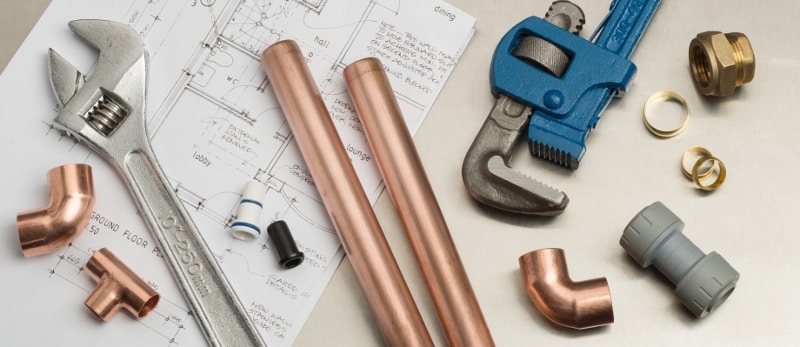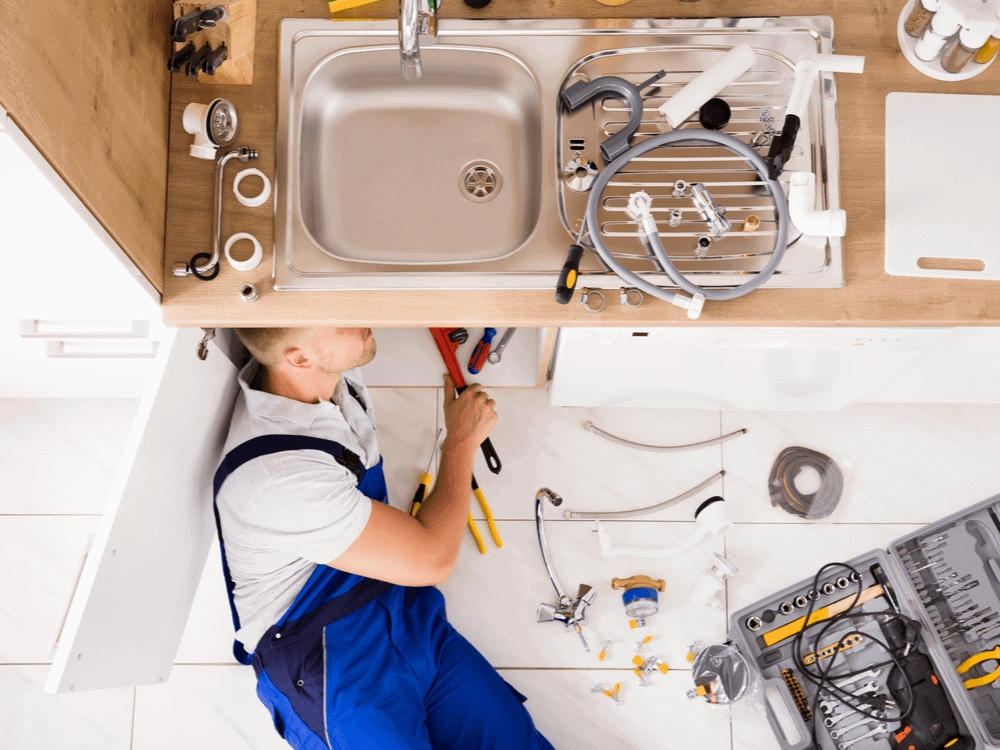The Anatomy of Your House's Plumbing System Explained
The Anatomy of Your House's Plumbing System Explained
Blog Article
Do you find yourself on the lookout for help on Understanding Your Home's Plumbing Anatomy?

Comprehending just how your home's plumbing system functions is essential for every house owner. From providing clean water for drinking, food preparation, and showering to securely removing wastewater, a properly maintained plumbing system is important for your household's wellness and comfort. In this detailed overview, we'll discover the elaborate network that comprises your home's pipes and offer pointers on maintenance, upgrades, and handling typical problems.
Intro
Your home's pipes system is greater than simply a network of pipes; it's a complex system that ensures you have access to clean water and effective wastewater elimination. Recognizing its parts and how they collaborate can help you avoid pricey fixings and ensure whatever runs efficiently.
Fundamental Parts of a Pipes System
Pipelines and Tubes
At the heart of your pipes system are the pipelines and tubes that lug water throughout your home. These can be made of different products such as copper, PVC, or PEX, each with its advantages in regards to toughness and cost-effectiveness.
Components: Sinks, Toilets, Showers, and so on.
Components like sinks, commodes, showers, and bath tubs are where water is made use of in your house. Comprehending just how these components attach to the pipes system aids in detecting troubles and intending upgrades.
Valves and Shut-off Points
Shutoffs regulate the flow of water in your plumbing system. Shut-off valves are crucial during emergencies or when you require to make fixings, permitting you to separate parts of the system without interfering with water circulation to the whole home.
Water System System
Main Water Line
The major water line attaches your home to the metropolitan supply of water or an exclusive well. It's where water enters your home and is distributed to different components.
Water Meter and Pressure Regulator
The water meter procedures your water use, while a stress regulatory authority makes certain that water streams at a risk-free pressure throughout your home's pipes system, protecting against damages to pipelines and components.
Cold Water vs. Warm water Lines
Understanding the difference between cold water lines, which supply water straight from the primary, and hot water lines, which lug warmed water from the water heater, aids in repairing and planning for upgrades.
Drain System
Drain Pipes and Traps
Drain pipelines bring wastewater far from sinks, showers, and bathrooms to the sewer or sewage-disposal tank. Traps protect against drain gases from entering your home and also catch particles that could create obstructions.
Ventilation Pipes
Ventilation pipelines allow air into the drainage system, protecting against suction that could reduce drainage and trigger traps to vacant. Appropriate ventilation is necessary for maintaining the stability of your pipes system.
Value of Proper Water Drainage
Ensuring appropriate drain prevents back-ups and water damage. Consistently cleaning drains pipes and maintaining catches can prevent pricey repair work and expand the life of your plumbing system.
Water Heater
Sorts Of Hot Water Heater
Water heaters can be tankless or traditional tank-style. Tankless heaters heat water as needed, while containers store heated water for prompt use.
Updating Your Plumbing System
Reasons for Updating
Upgrading to water-efficient components or replacing old pipelines can boost water quality, decrease water costs, and enhance the worth of your home.
Modern Plumbing Technologies and Their Advantages
Explore innovations like clever leak detectors, water-saving toilets, and energy-efficient hot water heater that can conserve money and minimize environmental effect.
Expense Factors To Consider and ROI
Calculate the upfront expenses versus lasting savings when taking into consideration plumbing upgrades. Many upgrades pay for themselves via reduced utility bills and less repair services.
Just How Water Heaters Connect to the Plumbing System
Understanding how water heaters connect to both the cold water supply and hot water distribution lines assists in diagnosing problems like inadequate warm water or leakages.
Upkeep Tips for Water Heaters
Routinely flushing your water heater to eliminate sediment, inspecting the temperature setups, and inspecting for leaks can extend its lifespan and improve energy efficiency.
Common Plumbing Issues
Leaks and Their Causes
Leaks can occur due to aging pipes, loose fittings, or high water pressure. Attending to leakages immediately avoids water damages and mold and mildew growth.
Obstructions and Blockages
Blockages in drains pipes and commodes are often triggered by purging non-flushable products or a build-up of oil and hair. Utilizing drainpipe displays and bearing in mind what goes down your drains pipes can protect against clogs.
Signs of Plumbing Troubles to Watch For
Low water pressure, sluggish drains, foul odors, or unusually high water bills are indicators of possible pipes troubles that need to be resolved immediately.
Pipes Upkeep Tips
Routine Assessments and Checks
Schedule yearly plumbing evaluations to catch concerns early. Try to find indications of leaks, corrosion, or mineral build-up in faucets and showerheads.
DIY Maintenance Tasks
Easy tasks like cleansing faucet aerators, checking for commode leaks making use of color tablets, or insulating subjected pipes in cool climates can avoid major pipes problems.
When to Call a Professional Plumbing Professional
Know when a plumbing issue calls for expert know-how. Attempting complex repairs without appropriate expertise can result in even more damage and higher fixing expenses.
Tips for Decreasing Water Use
Easy habits like repairing leakages quickly, taking shorter showers, and running complete loads of washing and dishes can preserve water and reduced your utility costs.
Eco-Friendly Plumbing Options
Take into consideration sustainable pipes materials like bamboo for floor covering, which is durable and eco-friendly, or recycled glass for counter tops.
Emergency Readiness
Actions to Take During a Pipes Emergency situation
Know where your shut-off valves lie and exactly how to turn off the water system in case of a burst pipeline or significant leak.
Importance of Having Emergency Get In Touches With Handy
Maintain contact details for local plumbing professionals or emergency solutions easily offered for quick reaction throughout a pipes crisis.
Ecological Influence and Conservation
Water-Saving Components and Appliances
Installing low-flow taps, showerheads, and bathrooms can significantly minimize water usage without compromising performance.
Do It Yourself Emergency Fixes (When Suitable).
Short-lived fixes like making use of duct tape to spot a leaking pipeline or putting a bucket under a leaking tap can reduce damages up until a professional plumbing technician gets here.
Final thought.
Recognizing the makeup of your home's pipes system empowers you to maintain it successfully, conserving time and money on fixings. By following regular upkeep routines and remaining educated about contemporary pipes technologies, you can ensure your pipes system operates effectively for several years to come.
HOW YOUR PLUMBING SYSTEM WORKS
Which Pipes Do What?
Blue lines = fresh water supply entering the building Red lines = hot water supply entering the building Grey lines = pipes carrying waste away from the building and venting pipes carrying gases away from the building (through the roof) YOUR MAIN PLUMBING SYSTEMS
There are two main plumbing systems that support your home s basic plumbing needs one that brings clean water into your home, and one that sends dirty water away from your home. Connected to the toilet, bath, shower, and other faucets in your home, these two systems keep your water flowing in the right directions.
ACCESSING FRESH WATER
Fresh and clean water is brought into your home through the main water supply line . Filtered through one pipe, this water is pressured to flow into the various fixtures in your home at any given time.
This water can be sourced from a well located on your property, a pond or river (mostly cottages), or, as in most cases, from the city s municipal water treatment centre. However, it is important to note that water that is untreated, such as the water siphoned from ponds or rivers, may not be safe to drink. Personal water supplies always need to be treated for hardness and contaminants before consumed.
MUNICIPAL WATER SUPPLIES
Improve taste and odour Remove sediment Eliminate hardness Reduce chlorine COLD WATER SUPPLY VS. HOT WATER SUPPLY
Cold water flows into your home or building through the service line, which then distributes hot or cold water to your fixtures. This line is most commonly run through a central column that runs floor to floor. Hot water runs in short and straight pipes as the longer the pipeline, the more heat that will be lost in the transfer. Having shorter pipes also allows residents to access hot water more quickly.
WASTE WATER SYSTEM
Your wastewater system is divided into two parts pipes that send wastewater away from your home and venting pipes that send sewer gas away from your home. Sewage water travels through pipes that flush the water and waste towards local sewers that are operated and managed by your city or town. Most sewer systems rely on gravity to move the wastewater to where it needs to go.
The further away from your toilet or sink, the larger wastewater pipes become. This allows for waste to be disposed of from various parts of your home or business at once without pipe blockages. The angle and flow of these pipes are also essential for keeping your waste pipes clear of build up.
https://harrisplumbing.ca/how-your-home-plumbing-system-works/

Do you like more info about Plumbing Installation 101: All You Need to Know? Place a remark down below. We'd be happy to see your opinions about this post. Hoping that you visit us again in the future. Sharing is nice. You won't know, you might be helping someone out. I love reading our article about .
Browse Our Site Report this page